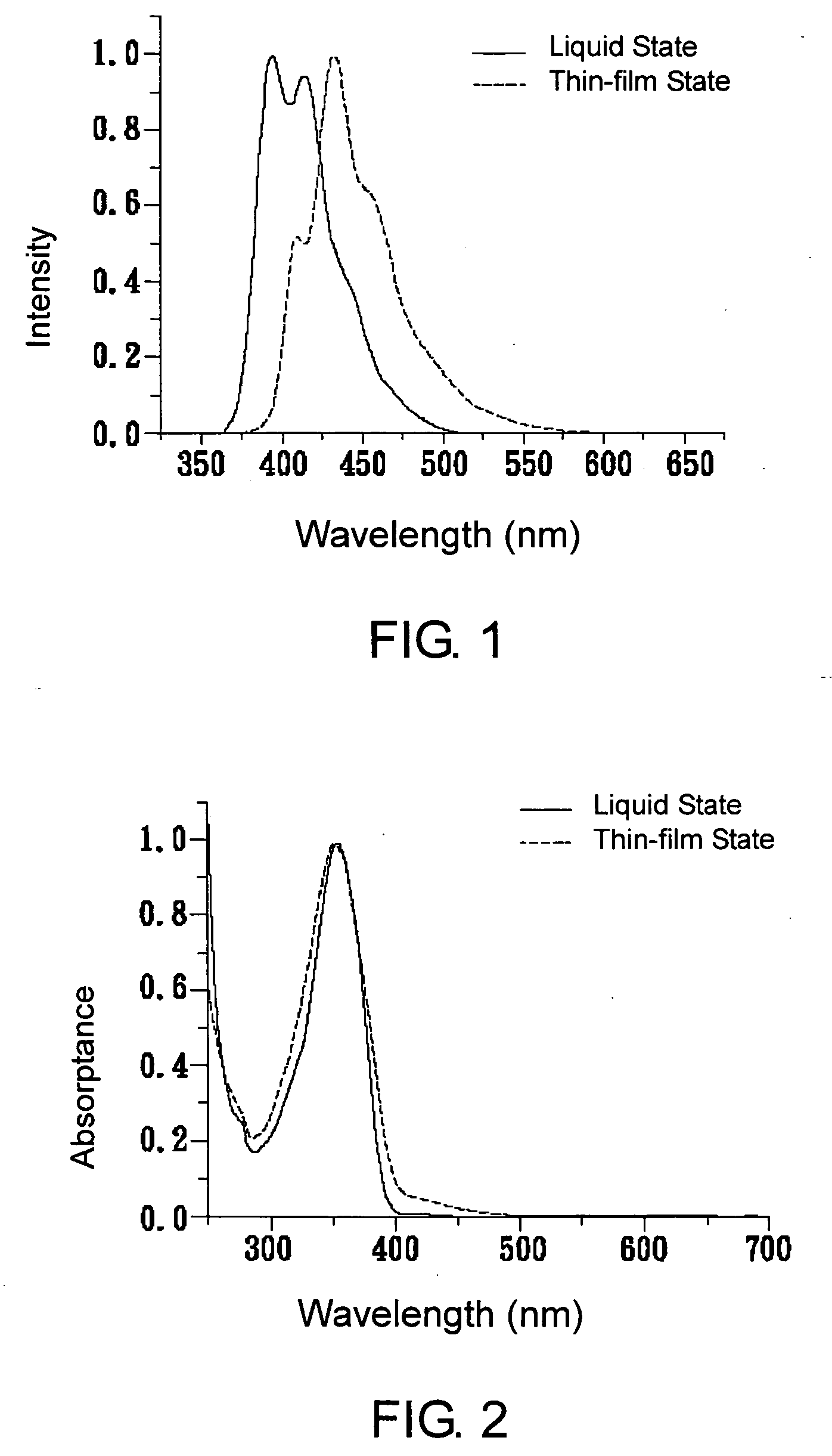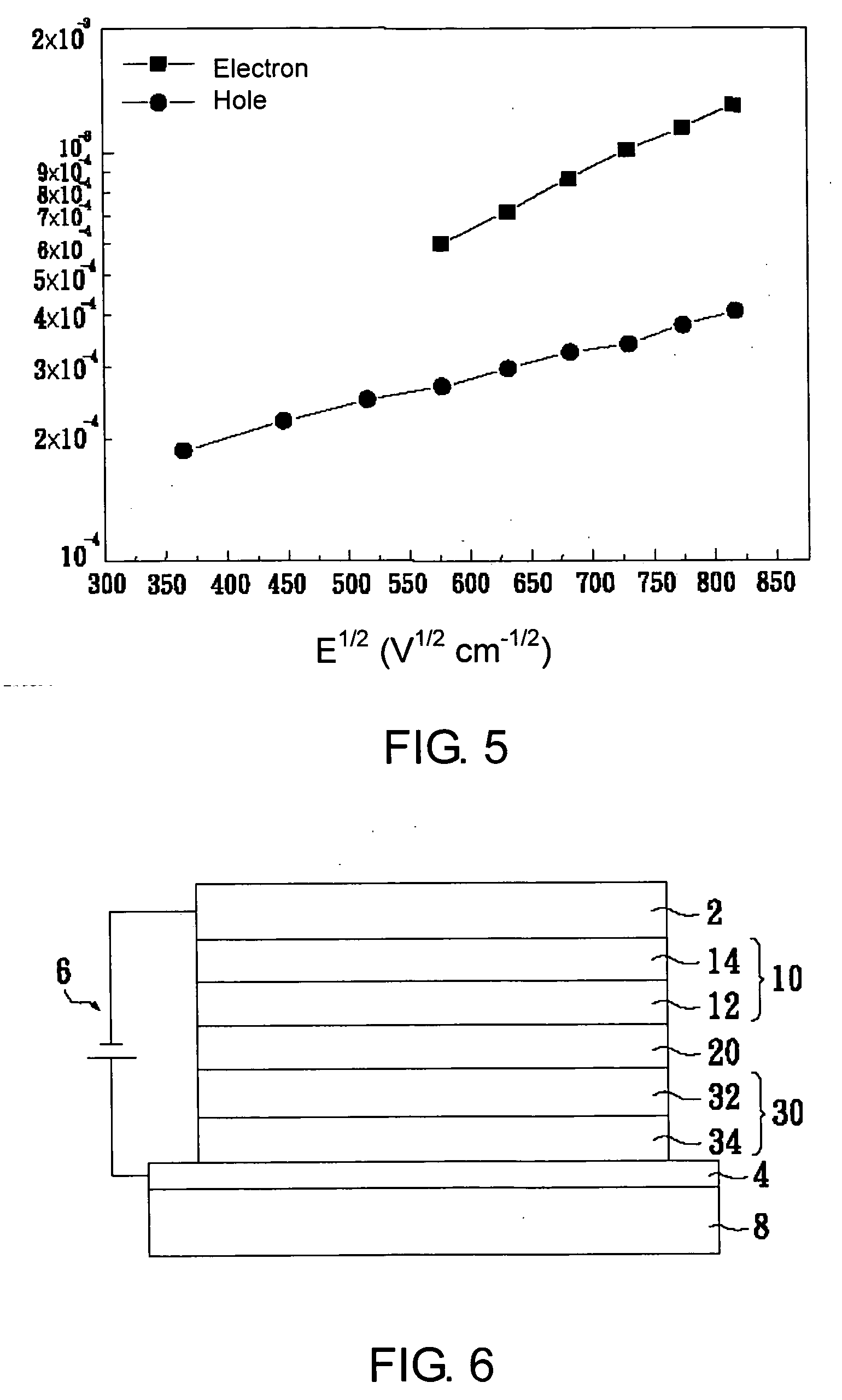Substituted oligofluorene for organic light-emitting diode and organic photoconductor
a technology of organic light-emitting diodes and organic photoconductors, which is applied in the direction of electrographic processes, instruments, corona discharge, etc., can solve the problems of poor durability, general limited application, and inferiority of positive charging single-layer photoconductors to negative charging layered photoconductors, and achieve excellent various characteristics and high carrier drift mobility.
- Summary
- Abstract
- Description
- Claims
- Application Information
AI Technical Summary
Benefits of technology
Problems solved by technology
Method used
Image
Examples
Embodiment Construction
[0049] According to a preferred embodiment, a substituted oligofluorene has the following chemical structure.
[0050] wherein X and Y are an integer of 0 or 1, G1 and G2 are independently of either CnH2n+1 or CnH2n+1O; and n is an integer of 0 to 16.
[0051] R1, R2, R3, R4, R5, R6, R7 and R8 are independently in each occurrence a hydrogen. In which, C1-20 hydrocarby is optionally substituted with C1-20 alkoxy / aryloxy, thioalkoxy / thioaryloxy, secondary / tertiary amines, hydroxy, carboxylic / sulfonic acids, cyano, and esters. C6-20 aryl is optionally substituted with C1-20 alkoxy / aryloxy, thioalkoxy / thioaryloxy, secondary / tertiary amines, hydroxy, carboxylic / sulfonic acids, cyano, and esters.
[0052] Each pair of (R1, R2), (R3, R4), (R5, R6) and (R7, R8) may also form C3-12 cyclic structures with the C-9 carbon of fluorene, wherein the cyclic structures may further contain one or more heteroatoms such as phosphorus, sulfur, oxygen and nitrogen. Preferably R1, R2, R3, R4, R5, R6, R7 and R8...
PUM
| Property | Measurement | Unit |
|---|---|---|
| electroluminescence quantum efficiency | aaaaa | aaaaa |
| electroluminescence quantum efficiency | aaaaa | aaaaa |
| electroluminescence quantum efficiency | aaaaa | aaaaa |
Abstract
Description
Claims
Application Information
 Login to View More
Login to View More - R&D
- Intellectual Property
- Life Sciences
- Materials
- Tech Scout
- Unparalleled Data Quality
- Higher Quality Content
- 60% Fewer Hallucinations
Browse by: Latest US Patents, China's latest patents, Technical Efficacy Thesaurus, Application Domain, Technology Topic, Popular Technical Reports.
© 2025 PatSnap. All rights reserved.Legal|Privacy policy|Modern Slavery Act Transparency Statement|Sitemap|About US| Contact US: help@patsnap.com



